Flames' early struggles, Ovechkin's weird start, and 4 other NHL items
After losing 30 one-goal games last season, the Calgary Flames missed the playoffs by two points. A fractured dressing room led to the firing of head coach Darryl Sutter, with Ryan Huska, one of Sutter's assistants, taking over in the summer.
Bringing in a fresh voice and tactics for a team that was on the edge of the postseason injected optimism into Calgary's room and fan base. Eight games into the new season, that optimism has morphed into pessimism.
The Flames own a 2-5-1 record and a minus-12 goal differential. A 3-0 home loss to the Blues on Thursday made it four straight losses ahead of Sunday's Heritage Classic outdoor game against the Oilers (who are also struggling).
As defenseman Nikita Zadorov put it, Calgary is "playing like shit right now."
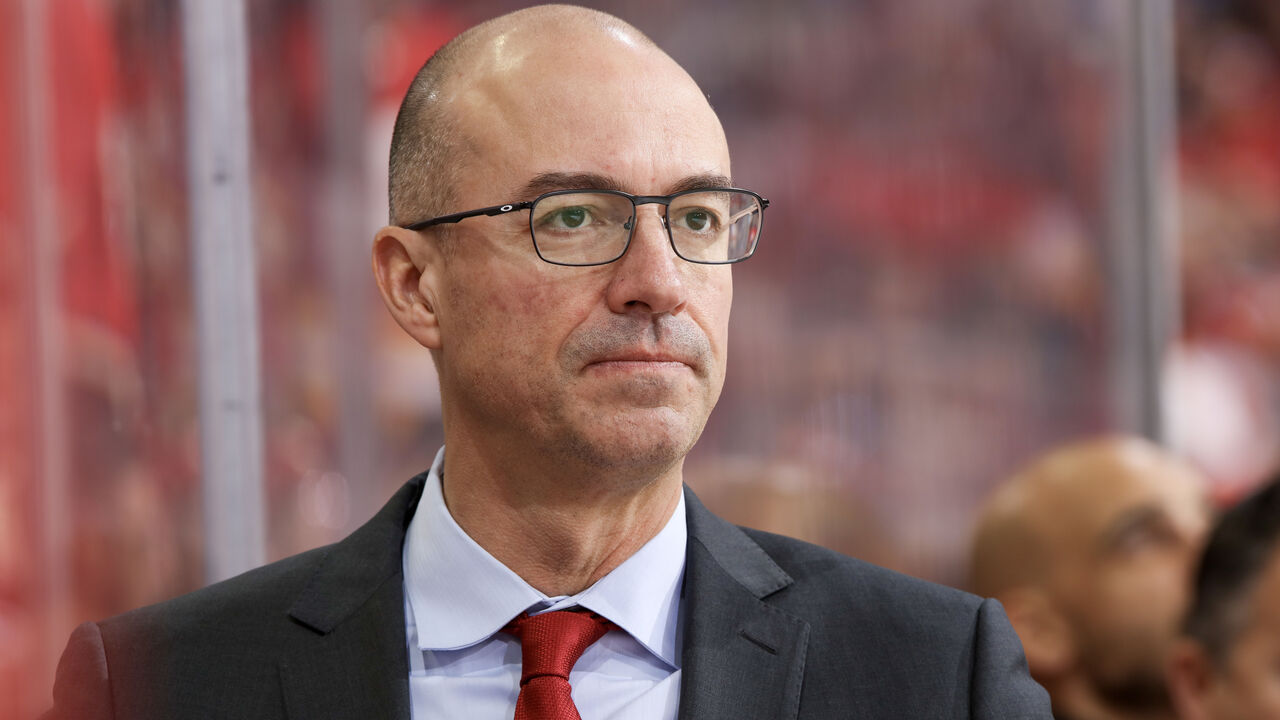
Last week in Buffalo, before the Flames' 4-3 victory over the Sabres, I asked Huska about team identity and what Calgary should look like on the ice.
"It's a team that's hard to play against," the rookie head coach said. "You don't give a lot of time and space. We may not have the most physical group. We may not have the most offensive group in the league. But we have a lot of guys that are really good hockey players, and when you play the right way together, they're hard to play against because they don't leave a lot of room."
Huska went on to explain that "playing together and playing tight" on defense can force turnovers. Then, the Flames can attack in numbers off the rush.
"When you're in the defensive zone and you're really tight together, it's easier to break out and easier to come together as a wave of five," winger Dillon Dube said. The 25-year-old added: "We took notes from other teams, the hard teams you play. Every time you look up (as an offensive player), you have a guy in your face. We're trying to build that within our team."
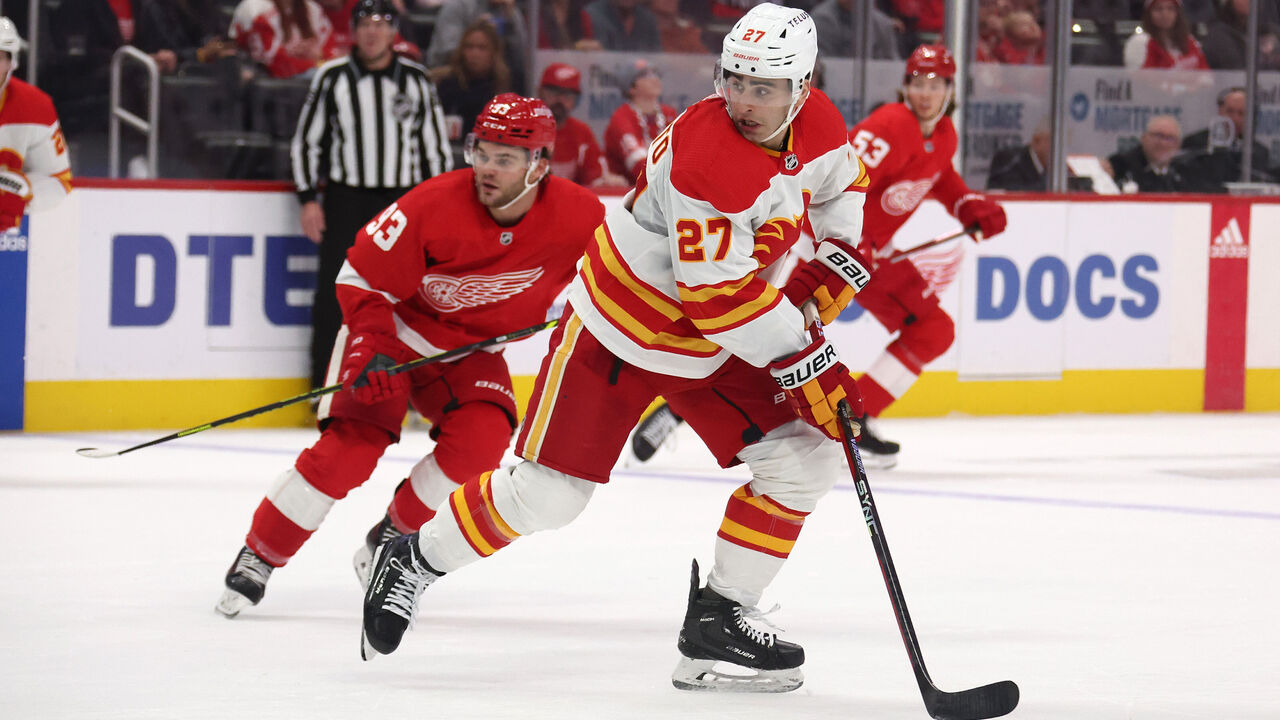
So far, so good on that front: As of Friday morning, Calgary is tied for 13th in the NHL in scoring chances generated off the rush, according to Sportlogiq.
In just about every other per-game category offensively, the news is not so good.
Goals: 29th in the league. Expected goals: 25th. Inner-slot shots: 31st. Quality scoring chances: 25th. Chances generated off the cycle: tied for 29th. Chances off the forecheck: tied for 22nd. Chances off rebounds: tied for 25th.
The club's two highest-paid players - forwards Jonathan Huberdeau and Nazem Kadri - have combined for just five points through eight games. The power play has capitalized on only three of its 26 opportunities. Top-four defenseman Rasmus Andersson is currently serving a four-game suspension.
Ironically, goaltending, a major sore spot last year, has been an area of relative strength. No. 1 guy Jacob Markstrom is rocking a decent .906 save percentage through six starts and, among the 29 goalies with three or more starts, he ranks 14th in goals saved above expected per 60 minutes.
The Flames have played fewer than 10% of their games, so it's not quite time to panic. But, if these trends continue deep into November, it will be.
Making sense of Ovechkin's start
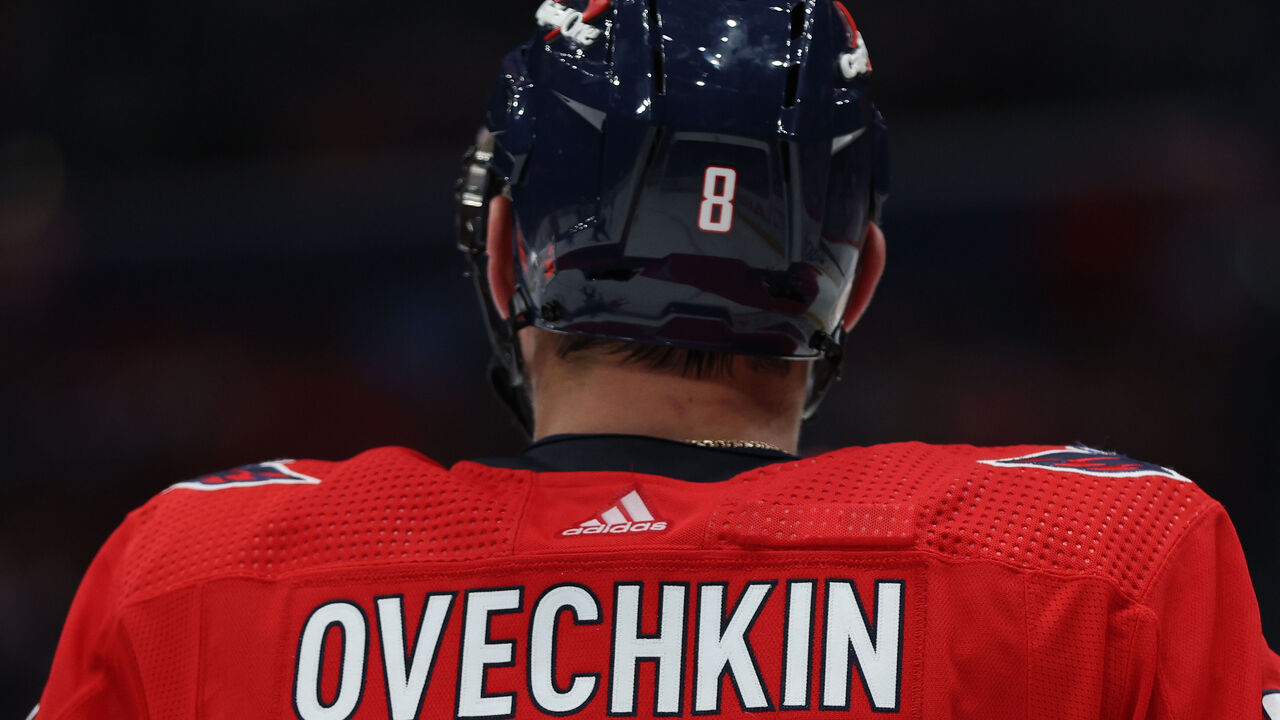
Alex Ovechkin's game will be under the microscope for the rest of his career. It's part of the deal when you're chasing down the all-time goals record.
A slow start for Ovechkin and the Washington Capitals transformed that extra attention from "How much ground can Ovechkin make up on Wayne Gretzky this year?" to "Is Ovi washed?" Then, on Tuesday, in his fifth game of the season, the captain finally scored his first goal of the campaign late in the second period. It came on the power play (of course), and, incredibly, his 13th shot of the night against Toronto.
Here are three takeaways from Ovechkin's first six games.
1. Old engine took a while to fire up
In the Capitals' season opener, Ovechkin finished with four shots on goal off nine attempts. In the second and third games, he failed to record a single shot on goal off a combined nine attempts. The fourth game was better: five shots on goal off eight attempts. Then he broke out for a comical 14 shots off 17 attempts against Toronto. And, in the sixth Wednesday night, he recorded four shots off 10 attempts.
Ovechkin, who potted an empty-netter Wednesday, needed to walk before he could run. He had to shake off some rust, adjust to how defenders were covering him (seemingly tighter than ever), and muscle his way into the slot.
Ovechkin's always been a volume shooter, so it was fair to wonder if something was amiss after he went consecutive games without a shot on goal. His outburst over the past two games suggests he's fine.
2. Expectations need to be lowered
In his prime, Ovechkin was a force of nature. A goal-scoring machine.
At 38 years old, Ovi's still the same in many ways. He's still darting around the rink like a shark searching for blood - or, in his case, openings that may lead to a scoring chance. He's still calling for the puck with his stick and voice both raised. He's still exerting minimal energy defensively so he can flourish offensively. He's still delivering the odd brain-rattling hit along the boards or in open ice.
Ovechkin is all of those things … except toned down. He's a bit slower, a bit less precise with his shot, a bit less physical, and a bit less energetic - which is normal for 38. His days of scoring 60, and probably 50, appear to be over. But 40? Doable.
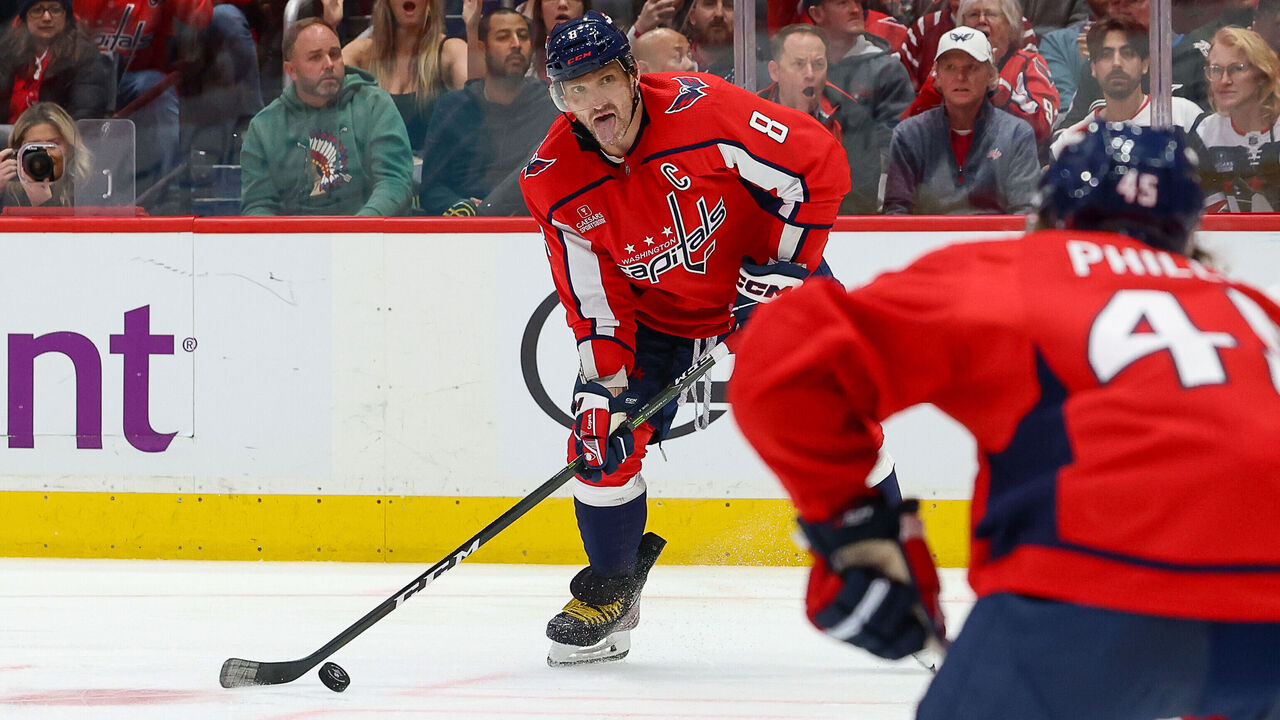
3. This isn't all on Ovechkin
With an average age of 30.2 years, the 2-3-1 Caps are the NHL's second-oldest club. Most of the 2018 Stanley Cup core remains intact, but similar to Ovechkin, nobody's at the peak of their powers due to mileage, injury, or both.
This is affecting Ovechkin's ability to generate chances and goals.
Take the power play. Ovechkin needs to be fed one-time passes throughout each two-minute stretch. He does a lot of his damage from his "office" in the left circle. But so far, the puck's been spending too much time on the other side of the offensive zone. Top-unit regulars Nicklas Backstrom, Evgeny Kuznetsov, T.J. Oshie, and John Carlson have, for the most part, struggled to put Ovechkin in the best position to unleash his patented clapper.
'Relentless' Benson looks at home
Connor Bedard, Leo Carlsson, and Adam Fantilli were all destined to make their respective teams out of training camp - zero suspense for the top three picks in this summer's draft. The only other 2023 pick to appear in a regular-season game? Zach Benson, who slid to Buffalo at No. 13 on draft night.
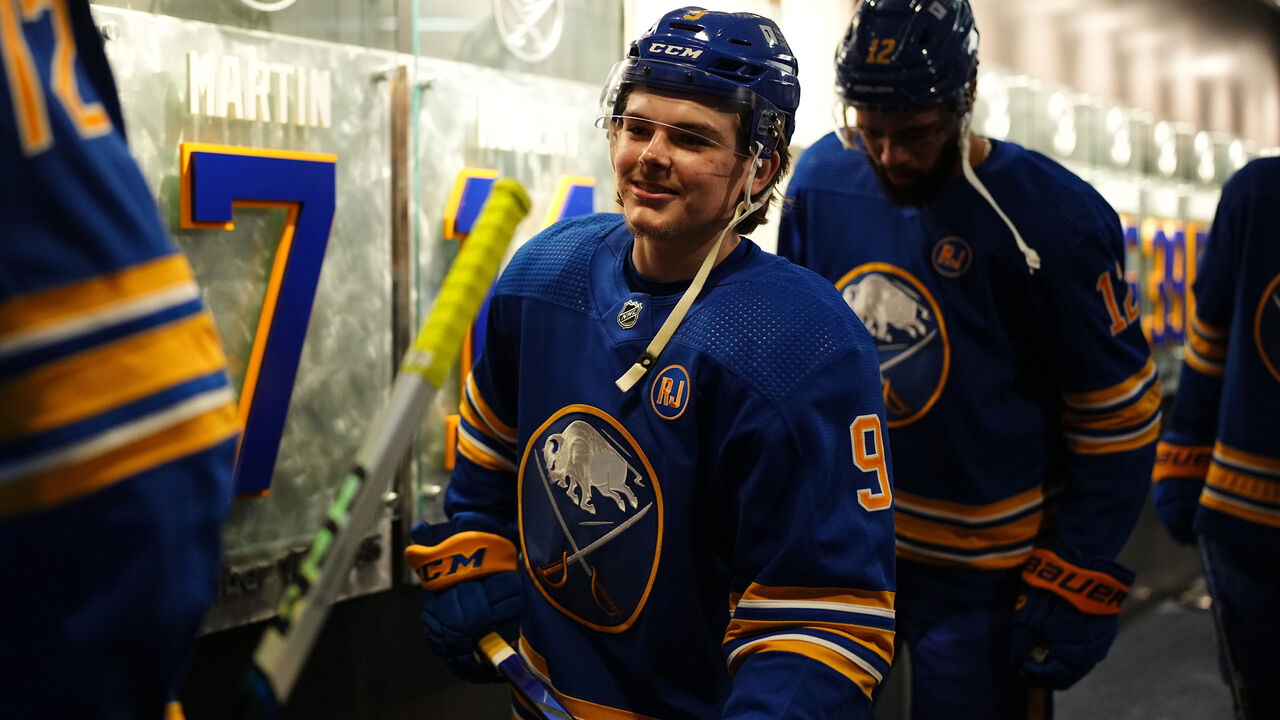
A player picked outside the top 10 cracking an NHL lineup mere months after getting drafted is extremely rare. Only four players picked outside of the top 10 in the 2022 draft have played an NHL shift despite the extra year of development. Yet keeping Benson around was a no-brainer for the Sabres.
"He's been exceptional without the puck," head coach Don Granato said last week of Benson, who's very intelligent, especially with positioning, and uses every inch and pound of his 5-foot-9, 163-pound frame to win puck battles.
Benson dressed for the first four contests of the season, missed two thanks to injury, and then returned to the lineup Tuesday for the fifth game of his career. A left-handed forward playing right wing, he's contributed a pair of assists and nine shot attempts. In Benson's 59 total five-on-five minutes, the Sabres have controlled 54% of the expected goals, according to Evolving-Hockey.
"He's relentless on pucks. For a smaller, skilled guy, he's pretty feisty," Sabres defenseman Mattias Samuelsson said. "I can tell you, just from practice, that he's a pain in the ass to play against. He's slippery, a really smart player."
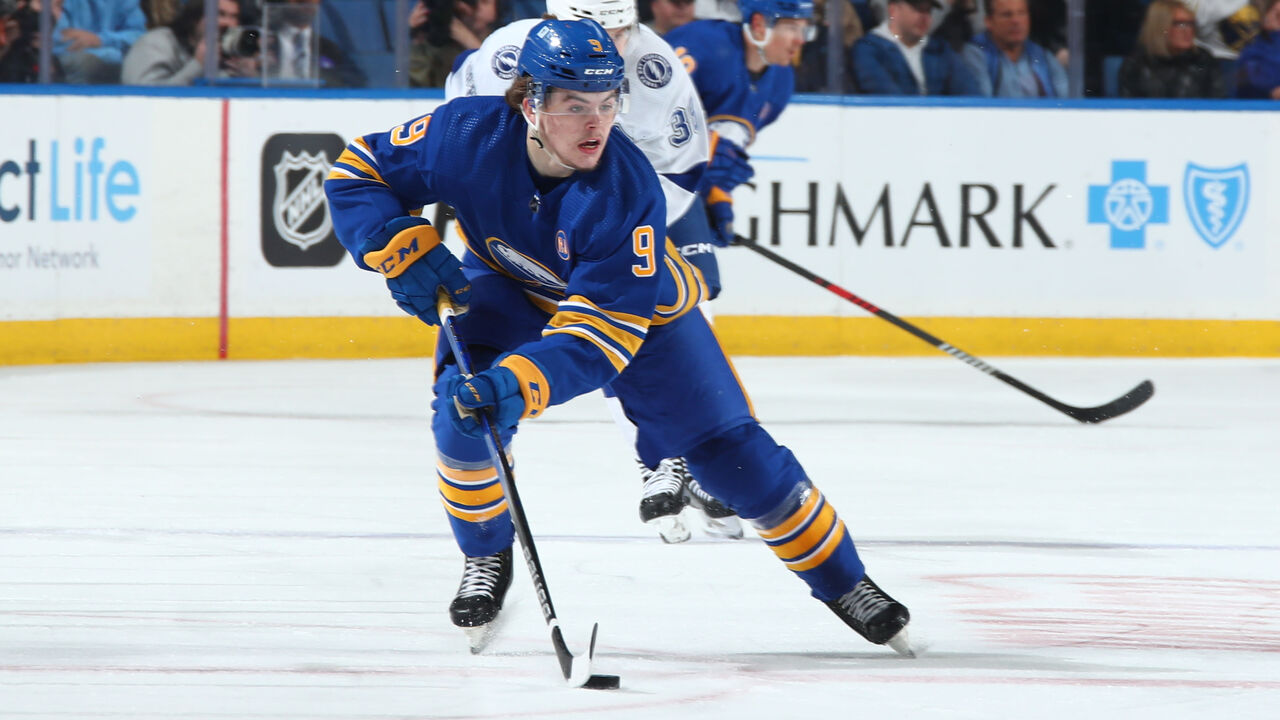
Part of the appeal is Benson's comfort level. He's ready for the big time.
"We give a little pre-scout, and he's chuckling with one of the coaches, 'Of course, I know this team. I've watched them a thousand times on video and studied them,'" Granato recalled of a recent interaction. "That's an example of why he has some elite attributes. He's coached himself on the way up. He's studied the game, studied ways to be successful within the game."
NHL rules stipulate Benson can't play in the AHL because he's still only 18. He can continue to suit up for the Sabres or go back to the Western Hockey League, which he tore apart last season (98 points in 60 games). Assuming his play doesn't tail off over the next week or two, there's a strong chance Benson sticks in the NHL all year.
Parting shots
Attendance woes: The Sabres, Sharks, and Jets have an average attendance of 14,876, 14,437, and 11,823, respectively. Those are alarming numbers, and let's not forget the Coyotes are playing out of a 4,600-seat college rink for the foreseeable future. Sky-high ticket prices and difficult economic conditions are certainly key factors, and alternative entertainment options are surely keeping people away. The NHL can't hand-wave this attendance lull away. The league office and these individual teams should be investigating why - beyond poor performance - fans aren't showing up for live games, and adjust accordingly. In the Jets' case, the fans may simply be fed up with mediocrity.
Shame to see the Jets attendance numbers. But I'm also respectful that the cost of living in Canada right now is really tough on families. A night out for an NHL hockey game isn't cheap.
— Shawn Simpson (@TSNSimmer) October 19, 2023
Lockdown pairings: Something I love to track to start each NHL season is which regular defensive pairing goes the longest without giving up its first goal. So far, 70 pairings have skated together for 50 minutes or longer at five-on-five, and of those 70, only five have held the opposition scoreless. Vancouver's Quinn Hughes and Filip Hronek are 6-0; Montreal's David Savard and Mike Matheson are 3-0; Boston's Charlie McAvoy and Matt Grzelcyk are 2-0; Tampa Bay's Victor Hedman and Erik Cernak are 1-0; and the Islanders' Alexander Romanov and Ryan Pulock are scoreless. With Savard suffering a long-term injury earlier this week, the field's been trimmed to four groups for now. My money's on the versatile McAvoy-Grzelcyk outlasting the other three.
Quinn Hughes and Filip Hronek are going to be viewed as one of the top defensive pairings in the entire NHL by year's end. They've been fantastic against some of the leagues best offenses in the early going. Give them another 20 games together and it'll be an elite pairing.
— Matviyko (@kingmatviyko) October 24, 2023
Curious trend: More penalty shots are being called this season, with nine awarded through 110 total games (8.2%). For context, the rate of 4.3% during the 2019-2020 season counts as the highest year-end rate in the previous five campaigns. Now, this trend could easily be first-month noise, and it wouldn't be surprising if 2023-24's rate sits closer to 4% than 10% by January. Still, the uptick is worth monitoring. Have on-ice officials been told to favor penalty shots over minor penalties in borderline scenarios, like when the attacking player is hooked on a partial breakaway? Are defenders being careless? Has the game gotten so fast that an increase in penalty shots was all but inevitable?
1 thousand years of good fortune to every referee who calls a penalty shot. That's the stuff of life, man.
— Ryan Hana (@RyanHanaWWP) October 17, 2023
Takes, Thoughts, and Trends is theScore's biweekly hockey grab bag.
John Matisz is theScore's senior NHL writer. Follow John on Twitter (@MatiszJohn) or contact him via email ([email protected]).
HEADLINES
- Sens' Ullmark takes leave of absence for personal reasons
- Matthews lauds improved power play in win over Senators
- Panthers' Tkachuk practices for 1st time this season
- Blue Jackets' All-Star defenseman Werenski placed on injured reserve
- Lundell, Sabourin fined following penalty-heavy Panthers-Lightning tilt